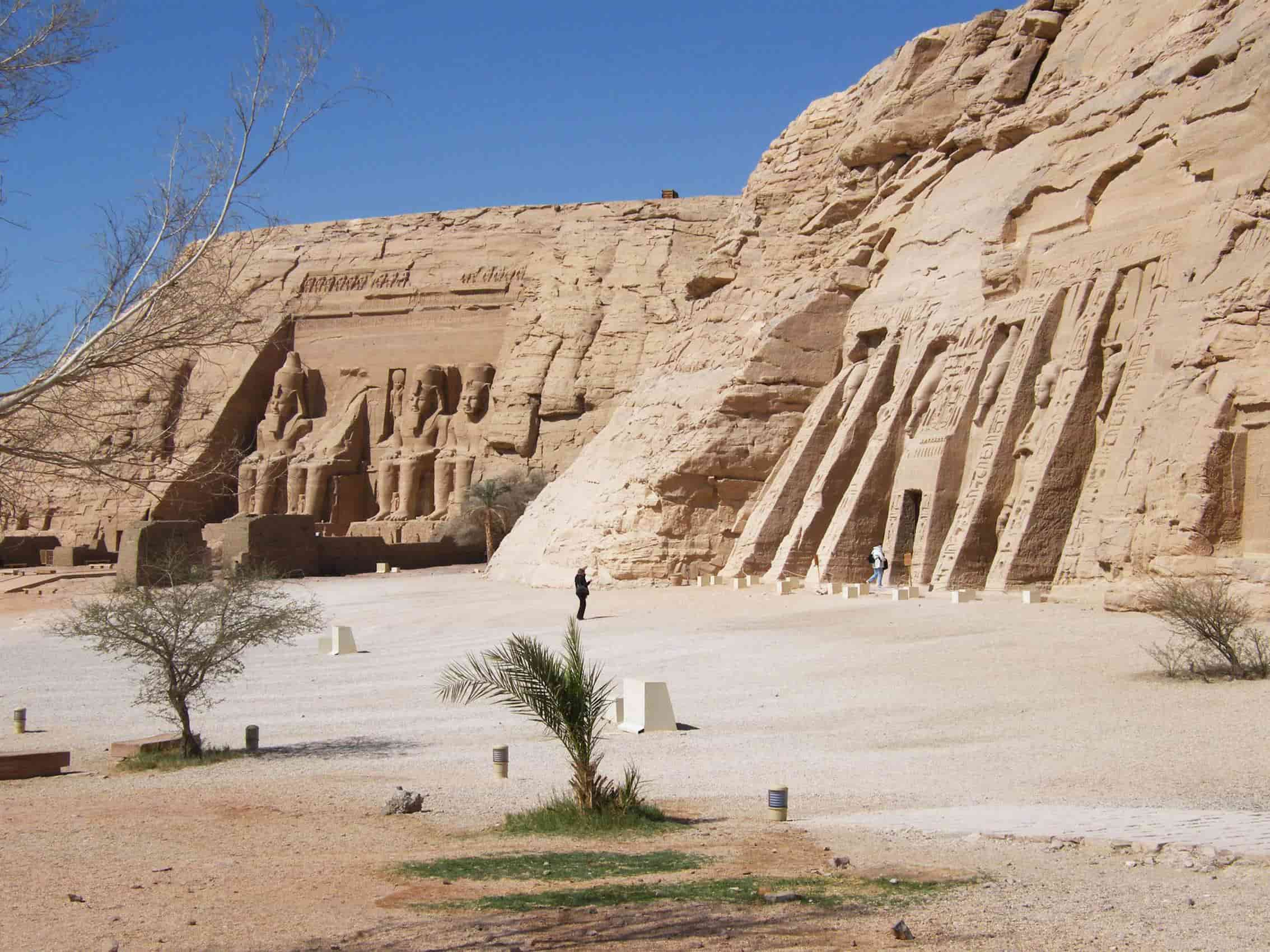Welcome to the mesmerizing world of Egyptian Ancient Thebes, where history and grandeur converge in magnificent temples that narrate tales of divine queens and pharaohs. In this cluster page, we delve into the heart of Luxor and Karnak Temples, and now, our journey takes us to the breathtaking site of Abu Simbel, home to one of the most remarkable monuments dedicated to a queen of unrivaled beauty and significance.
Nefertari: A Queen of Elegance and Power:
Nefertari, meaning “Beautiful Companion,” was the beloved queen of Ramses II, one of ancient Egypt’s most powerful pharaohs. Renowned for her beauty, intelligence, and influence, Nefertari held a special place in the heart of Ramses II, and her legacy is immortalized in the exquisite temple at Abu Simbel.
Abu Simbel: A Marvel in the Nubian Desert:
Located in the southern part of Egypt, near the border with Sudan, Abu Simbel stands as a testament to the architectural prowess of the ancient Egyptians. Carved into the solid rock on the western bank of Lake Nasser, the temple complex comprises two main structures – the Great Temple of Ramses II and the smaller yet equally captivating Temple of Hathor dedicated to Queen Nefertari.
The temple, known as the Temple of Nefertari or the Temple of Hathor, is a masterpiece of ancient Egyptian architecture and art. It is smaller than the nearby temples dedicated to Ramesses II, but it is equally impressive. The temple is carved into a sandstone cliff overlooking the Nile River and features intricate carvings, vibrant colors, and stunning reliefs.
The temple is divided into three main sections: the entrance hall, the hypostyle hall, and the sanctuary. The entrance hall is adorned with scenes depicting Nefertari’s coronation and her journey to the afterlife. The hypostyle hall is filled with 14 massive columns that support a vaulted ceiling decorated with scenes from Nefertari’s life. The sanctuary, located at the back of the temple, houses a statue of Nefertari seated on her throne.
The temple’s most striking feature is its colorful decoration. The walls are painted in shades of red, blue, and green, creating a vivid and lively atmosphere. The reliefs are equally impressive, depicting scenes from Nefertari’s life as well as religious symbols and mythological creatures.
The Temple of Nefertari is not only a testament to ancient Egyptian art and architecture but also to the enduring love between Ramesses II and his queen. It serves as a reminder of the importance of women in ancient Egyptian society and their role as divine figures.
Symbolism and Devotion:
Nefertari’s Temple is not just a monument; it’s a symbol of love, devotion, and the powerful role of queens in ancient Egyptian society. The reliefs and inscriptions pay homage to the queen as a divine consort, emphasizing her connection to the goddess Hathor and her role in ensuring the prosperity and well-being of the kingdom.
Preservation Efforts:
In modern times, the temples of Abu Simbel faced the threat of submersion due to the construction of the Aswan High Dam. However, in a remarkable feat of engineering and international cooperation, the temples were relocated to higher ground to preserve these treasures for future generations. Today, visitors can witness the splendor of Nefertari’s Temple and appreciate the dedication put into its preservation.
Nefertari’s Temple in Abu Simbel stands as a testament to the enduring love between a pharaoh and his queen, as well as the cultural and artistic achievements of ancient Egypt. As you explore the wonders of Egyptian Ancient Thebes, Luxor, Karnak Temples, and Abu Simbel, let the stories of divine queens and powerful pharaohs transport you back in time to a world where gods and mortals coexisted in grandeur and splendor.



Comment (0)